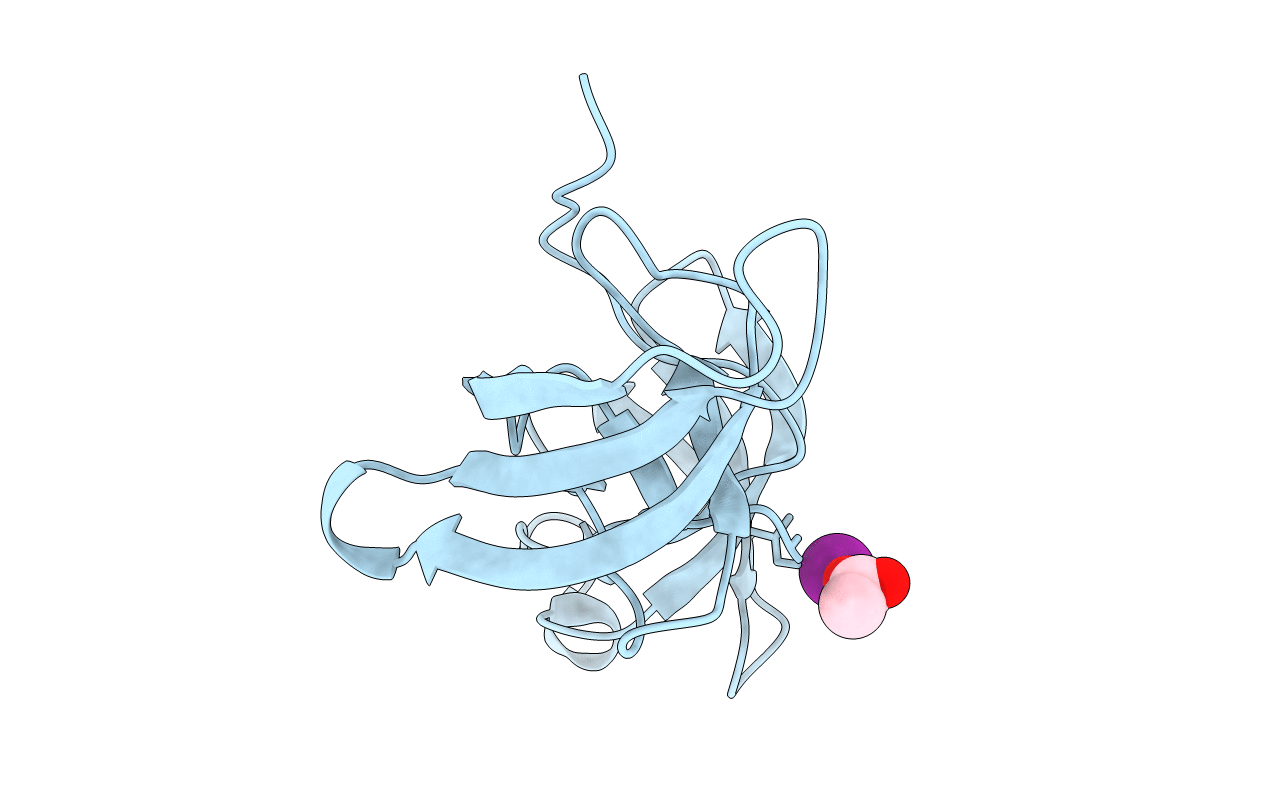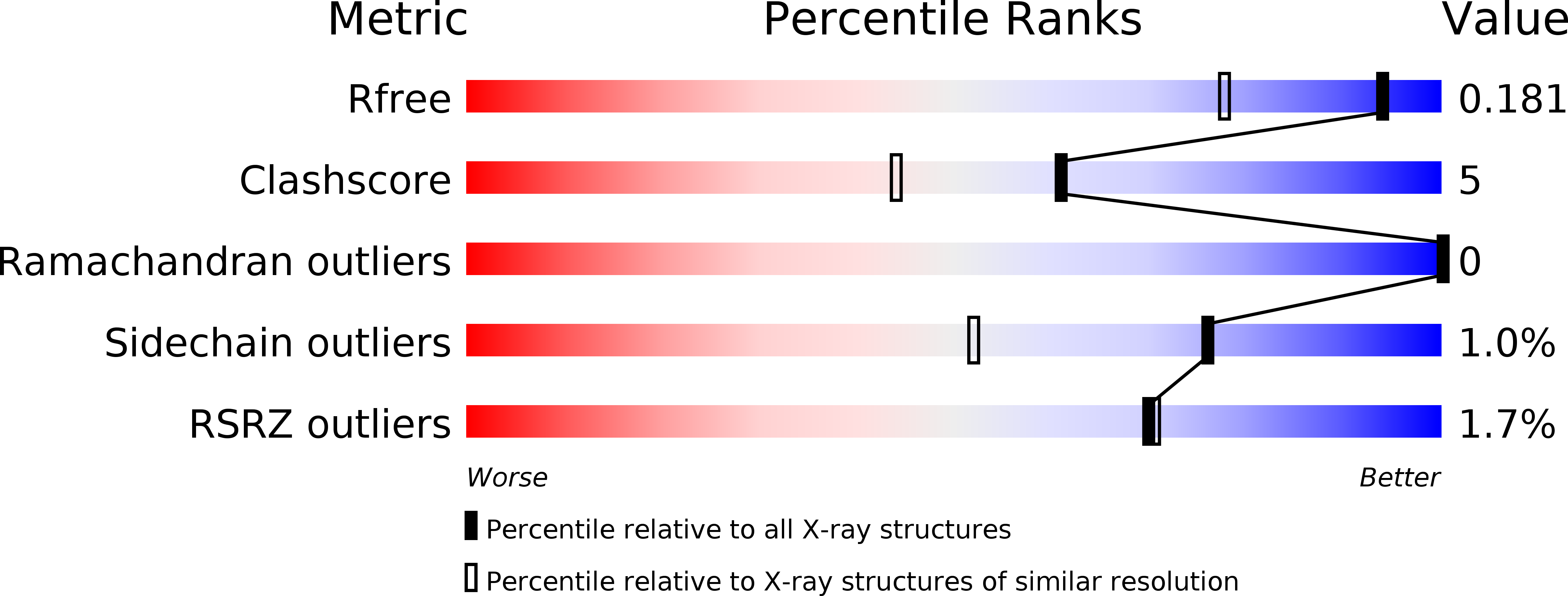
Deposition Date
2006-04-20
Release Date
2006-10-04
Last Version Date
2024-05-08
Entry Detail
PDB ID:
2CKK
Keywords:
Title:
High resolution crystal structure of the human kin17 C-terminal domain containing a kow motif
Biological Source:
Source Organism:
HOMO SAPIENS (Taxon ID: 9606)
Host Organism:
Method Details:
Experimental Method:
Resolution:
1.45 Å
R-Value Free:
0.17
R-Value Work:
0.13
R-Value Observed:
0.13
Space Group:
P 21 21 21


